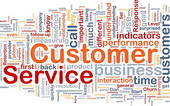
Customer Pathways – The Routes Out
Aim
For participants to consider and appreciate the different ways in which their organisation makes contact with customers, and their role in ensuring that this is a positive experience for those customers.
Overview
Groups of participants think about the different ways in which their organisation makes contact with its customers. They are then asked to consider how they personally can contribute to the success of this route of customer service.
Numbers
Any number working in groups of three to six.
Suitable for
New starters, refresher, short session on a longer training, team meeting activity.
What you need
One sheet of flipchart paper per group plus pens
Resource 1 – Customer Pathways, The Routes Out
Handout 1 – The Brief
Handout 2 – Action Plan
Handout 3 – Report Back (for evaluation)
Preparation
- Copy Handout 1 – The Brief (one per group)
- Copy Handout 2 – Action Plan (one per person)
- (Optional) copy Resource 1 – Customer Pathways The Routes Out for use as a handout
- Arrange the room so that people can work in groups of three to six people
What to Do
Activity – 3 minutes – groups
Give each group a sheet of flipchart paper and some pens. Also give them a copy of Handout 1 – The Brief.
Ask them to complete stage one of the exercise by mapping out the different ways in which the organisation makes contact with customers.
Reflect – 3 minutes – groups
Refer the groups to stage two of the brief and ask them to consider the ways in which they personally have an impact on that means of contact.
Resource 1 – Customer Pathways, The Routes Out will help you to prompt any groups that might be finding difficulty with the task.
Conclude – 3 minutes – whole group
Collect feedback from the groups and gain consensus on the ways in which individuals do have an impact on each of the different routes that have been identified.
If appropriate, use Resource 1 – Customer Pathways The Routes out as a handout.
Plan – 1 minute – individuals
Give everyone a copy of Handout 2 – Action Plan and ask them to complete it.
Evaluation
Two weeks after the training event send everyone a copy of Handout 3 – Report Back, asking then to complete and return it.
Variations
You could concentrate on just one key pathway, or split the pathways between smaller groups of participants.
Customer Pathways – The Routes Out
Resource 1
Use this resource if you need to prompt any of the groups during the exercise.
Feel free to add or amend sections according to the needs of the organisation.
| Letter |
- Spell names and addresses correctly
- Give accurate information
- Be timely
- Use correct grammar and corporate style
- Be aware of any mailshots that are being sent out
|
| Advertising |
- Be aware of current advertising and promotions
- Refer to advertisements to build customer awareness
|
| Telephone |
- Represent the organisation professionally
- Check that you are speaking to the right person
- Comply with outbound calling guidelines
|
| E-mail |
- Use correct grammar and spellings
- Avoid jargon
- Use an appropriate heading
- Be clear who the recipient should reply to
|
| Social media |
- Represent the organisation appropriately
- Be aware that this is a public medium
- Follow corporate guidelines
|
| Leaflet |
- Make sure that all leaflets are up to date
- Be aware of content of current leaflets and publications
|
| Branch Image |
- Keep premises tidy and clean
- Remember that you are representing the organisation at all times
|
Customer Pathways – The Routes Out
Handout 1 – The Brief
Stage One
On the sheet of paper that you have been given:
- Draw a shape in the centre which represents your organisation
- Draw lines out from the centre which represent the different ways in which your organisation makes contact with customers.
Stage Two
Now think about the impact that your personally can have on the level of service that is delivered along each of the pathways that you have drawn.
Make notes of the main points along each pathway.
Customer Pathways – The Routes Out
Handout 2 – Action Plan
As a result of this training session I shall take the following action:
I have chosen this because:
The result I hope to achieve is:
This action will be completed by (date):
Signed:
Date:
Customer Pathways – The Routes Out
Handout 3 – Report Back
After the above training session I took the following action:
The result was:
I now intend to:
Signed:
Date:
Please complete this form and return it to:
By (date):








